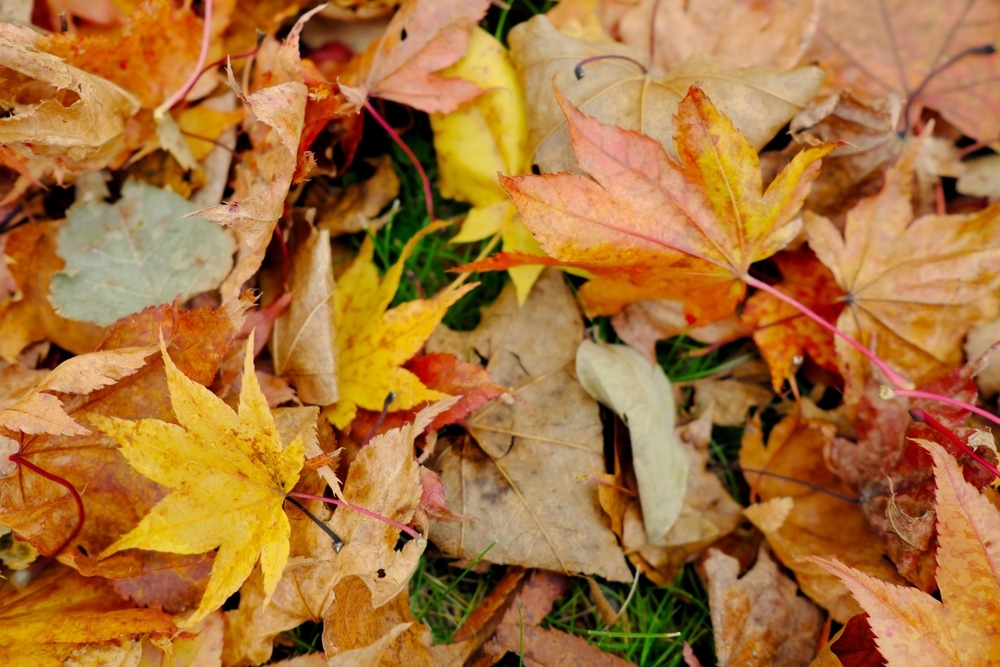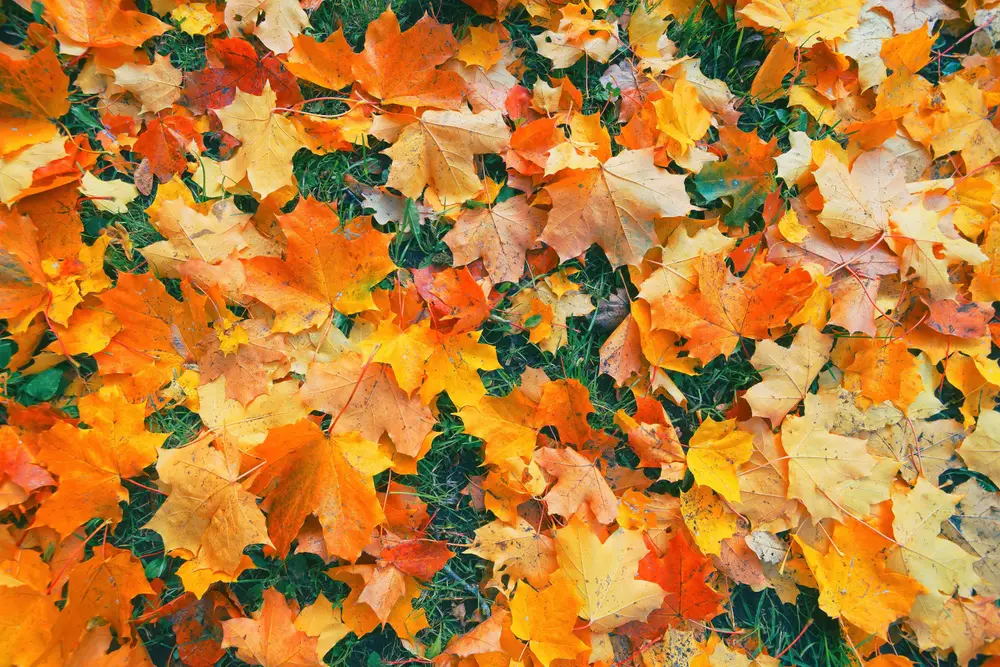For years, I considered dead leaves littering my lawn a nuisance. Cleaning up dead leaves, loading them in huge plastic bags, and disposing of them was a staple of my fall. Little did I know, I was wasting an amazing free resource for my garden.
Now, I am grateful for the falling leaves every year because I know what they can do and how to use them.
My goal is to help you do the same. So read on if you’ve ever wondered “Are dead leaves good for your garden?”
Dead Leaves Are Good For Your Garden For Several Reasons

You may already have a gut feeling that dead leaves are good for the soil in your garden. You’re right! They’re nutrient-rich and attract microscopic organisms that help plants absorb those nutrients.
Let’s start with the nutrients.
Dead Leaves Are Nutrient-Rich
Dead leaves release carbon as they slowly break down over time. Plants growing in a garden take carbon from the air, but they also draw it from the ground with their roots. So, adding dead leaves around the base of a plant gives it easy access to the carbon it needs to thrive.
Decaying leaves also contain other vital nutrients that help plants grow to their full potential: nitrogen, phosphorus, and potassium.
They Attract Beneficial Microbes
There’s an old saying, “Good gardeners grow plants, great gardeners grow soil.” It couldn’t be more true when it comes to dead leaves.
Decaying leaves attract beneficial microbes (AKA microorganisms). These microbes transform key nutrients in the soil, such as nitrogen and potassium, into an accessible form for plants.
Even fertilizers, while valuable, can’t benefit your plants without these microbes doing what they do.
In other words, adding dead leaves to your garden adds nutrients and the microbes necessary to make them accessible to your plants.
Are Dead Leaves Ever Bad For Your Garden?
Dead leaves have a lot of components that make them excellent additions to your garden. However, that does not mean that all leaves are good for all gardens. Generally, dead leaves benefit your garden, but it is essential to know what kind of tree you are gathering your leaves from because some species of tree leaves may be harmful to plant growth.
Not All Leaves Are Made Equal
Some trees have leaves higher in nutrients. Some kinds of leaves take a long time to break down and are not ideal for composting. And some kinds of leaves contain toxins that inhibit plant growth.
This might sound scary but don’t worry. Most leaves work just fine in a garden. Maple, ash, willow, elm, and fruit tree leaves are some of the best options because they break down very quickly.
The critical tree leaves to avoid are black walnut, buckeye, and eucalyptus. All three contain toxins that stop plants from growing.
The black walnut leaves, in particular, should not be anywhere near where you want plants to grow since even the roots of the tree prevent other plants from growing.
Uses For Dead Leaves In Your Garden

Dead leaves have several uses in your garden. These include filling your raised garden bed, using them in compost, making leaf mold with them, or using them as mulch.
Let’s start with using them to fill your garden bed.
Filling Your Garden Bed
It’s common to fill a raised garden bed with just dirt. However, you can jump-start it with essential nutrients by layering in dead leaves, lawn clippings, branches, and other yard waste.
You can still use them for your existing garden bed as well.
First, shred your dead leaves into small pieces. This helps them to decompose quickly. Then, place them on top of your garden bed in the fall. By spring, they’ll have decomposed, and your garden bed will thank you for it.
Putting Them In Your Compost
Compost piles don’t need to be complicated. Certainly, the more well-designed your compost container is, the faster your scraps will turn into fresh, rich soil. That said, not everyone has the time to create the most efficient composting system, and that’s okay.
One big tip to get started is to use the right greens-to-browns ratio. Add three parts “brown” compost for every one part “green.” Greens are things like lawn clippings and vegetable scraps, while browns are things like wood shavings, straw, and dead leaves.
Making Leaf Mold
Traditional composting methods can frustrate gardeners for many reasons. This includes it only breaking down in the warmer months and turning into a frozen brick by winter. This also includes it being smelly and attracting unwanted critters.
Making leaf mold is an easy, stress-free alternative to these issues.
Start by using chicken wire, mesh, or even a plastic bag as a container for your leaves. Fill your chosen container with dead leaves, then water them so the whole pile is damp.
Check the pile every few months to ensure the leaves are still damp. Leave it for six months to a year or until the leaves have decomposed into a soft, earthy mound. They should fall apart in your hands.
Use this leaf mold alongside or instead of compost. It’s a great way to increase your soil’s nutrients and water retention.
Using Them As Mulch
Shredded dead leaves or the result of your leaf mold can benefit garden vegetables or fruit trees as mulch. Covering around the roots of your plants or trees with dead leaves helps with temperature control and water retention.
Dead leaves work just like peat moss or wood chip mulch, but they’re free! A thick layer of leaf mulch around your plants will keep the soil underneath cooler and wetter during dry, hot stretches in the summer.

